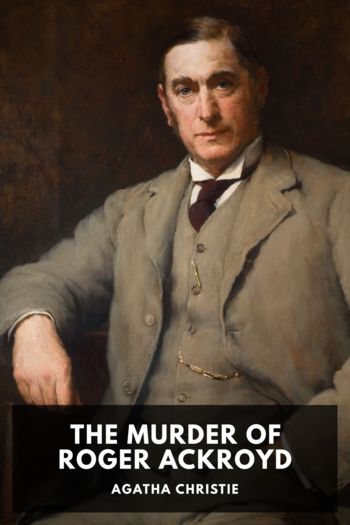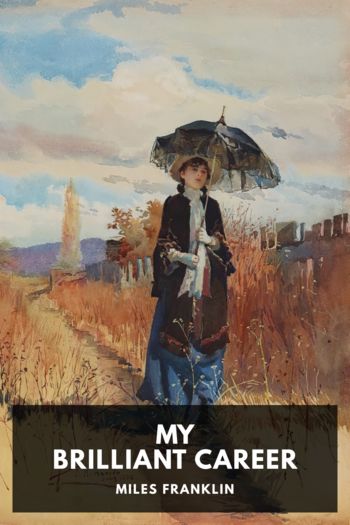The Clerkenwell Tales Peter Ackroyd (nice books to read TXT) 📖

- Author: Peter Ackroyd
Book online «The Clerkenwell Tales Peter Ackroyd (nice books to read TXT) 📖». Author Peter Ackroyd
“Enter in God’s name, Idonea.”
The sub-prioress, an elderly nun whose face was as raw and as pitted as over-salted meat, hardly waited for the invitation. She made a hurried pretence at bowing, but it was clear that she could not contain her excitement. “She has fallen into a fit. She is speaking in another voice than her own rightful voice.”
Agnes looked with pity, as always, at the ill-favoured visage of Idonea. “She is fighting with God.”
There was no need to explain who “she” was. The mad nun of Clerkenwell, Sister Clarice, had been conceived and born in the tunnels beneath the convent.
“Where is she now?”
“In the painted chamber.”
There had been unhappiness before in the House of Mary. A great scandal had been provoked by certain nuns under the rule of Agnes’s aunt, Joyeuse de Mordaunt, whose manifest infirmities prevented her from keeping control over her flock.
Two hundred yards from the convent stood the more celebrated priory of St. John of Jerusalem, the house of the Knights Hospitallers. A great congeries of stone buildings, chapels, orchards, gardens, fishponds, wooden dwellings and outhouses which stretched as far as Smithfield to the south and the Fleet river to the west, it was an ancient foundation, rendered more sacred by the relics which had been the gifts of several popes, among them a phial of milk from the breasts of the Virgin Mary, a piece of sail-cloth from St. Peter’s boat, a feather from the wings of Gabriel and fragments from the multiplied loaves and fishes. Only recently the senses of a man, dumb and blind from birth, had been restored by a drop of the Blessed Mother’s milk. The priory was a church and hostel for travellers, as well as a hospital and large working farm, but twenty years before it had also acquired a reputation for licentiousness. In the words of the cardinal legate who had been sent by the pope to investigate the matter, it had harboured “nervous and demoniacal merriment” together with “dances and lascivious games.”
Everyone agreed that it had been the fault primarily of the young nuns. It was remarked how eager they had become to cross the green of Clerkenwell in order to confess to the priests attached to the priory, and it soon became clear that confession was not their main purpose. The cellarer of the priory had told the kitcheness of the convent that the nuns had been observed dancing and playing the lute; as he put it to her, “the devil was dancing on their heads.” Some of the nuns had draped strings of small bells about their necks, which prompted the kitcheness to call them “the devil’s cows.” It was said that the mistress of the novices had thrown away her birch in sympathy, and had joined her charges in all this wantonness. It was also noted that several of the younger nuns were absent at vespers or at compline. Dame Joyeuse de Mordaunt suffered from the palsy, and could in no way be made to understand the seriousness of these reports.
But the disorder had grown so great that the prior of St. John felt obliged to seek an audience secreto with the Bishop of London. The bishop duly ordered a visitation, reminding the prior of the text “Evil shall have that evil will deserve,” and in person interviewed every nun in the convent of St. Mary. In the report of these proceedings, it was revealed that there had indeed been much running and leaping and flying, much lifting up and discovering, among the monks and nuns. But there were other enormities. Certain of the nuns admitted to clandestine meetings with the male servants of the convent in the cart-house and in the bake-house; even the church itself had become a place of assignation. It was often said by the citizens that nuns were fond of ginger hot in the mouth, and now the popular aphorism had been decisively proved. A cook, a porter, a gardener and cowherd were as a result discharged, while the errant nuns were despatched to other convents in disgrace. By dispersing them it was hoped, according to the bishop, that all their heat would be turned to cold.
The most shocking discovery came last, however, when it was revealed by the infirmaress, Sister Eglantine, that there existed a series of passages running beneath the earth between the priory and the convent. Their construction pre-dated the foundation of both religious houses, and their original purpose could not be divined, but they had been employed in more recent years as a convenient gateway for those who did not wish to be seen above the ground. In the bishop’s secret report, sent under seal to Rome, it was also disclosed that certain infants born of the illicit union between monk and nun were kept in these subterranean tunnels until they were of an age to join the life of the religious institutions without scandal. Such a child was Clarice, whose behaviour now so troubled the repose of Agnes de Mordaunt.
The vengeance of God had been swift. In the year of Clarice’s birth, 1381, the ragged army of Wat Tyler had stormed and burned the priory of St. John; the prior himself had been beheaded on Clerkenwell Green. As the fire raged the nuns of the House of Mary brought Joyeuse de Mordaunt before the rebels as an emblem of their weakness and helplessness. “The Virgin protects us,” they had called out to Tyler.
He had laughed and raised his hat in greeting; he had already dipped its feathers in the blood of the prior. The nuns had feared rape, but endured only a few loud and salacious remarks. The convent was spared but, three months later, the elderly prioress died of apoplexy. Her last words were, “The head was off before his hat was on.”
Agnes de Mordaunt adjusted her veil and wimple in order to ensure that her forehead was covered before leading Sister Idonea out of the chamber; she tied her monkey





Comments (0)